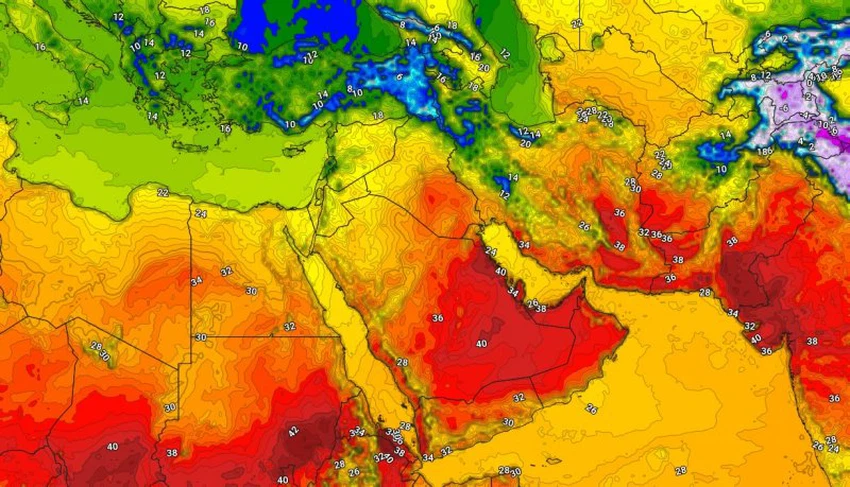Sharp temperature differences: Spring-like conditions in the Levant versus temperatures in the Arabian Peninsula.
Arab Weather - According to the computer maps at the Arab Weather Center, the eastern Mediterranean basin is expected to witness sharp temperature differences, specifically between the Levant and the Arabian Peninsula, for the remainder of this week. The Levant will be affected by a refreshing and mild spring air mass with temperatures in the early twenties Celsius, while the upper air pressure system will intensify over the Arabian Peninsula and bring temperatures to the forties.
A spring air mass will affect the Levant starting today until Saturday, April 5, 2025.
In detail, the Levant is affected by a mild air mass coming from the eastern Mediterranean basin. As a result, temperatures drop, and pleasant spring weather prevails across all Levant countries, interspersed with rainfall on the coasts of Syria and Lebanon. Temperatures are close to their average for this time of year. Meanwhile, the weather is extremely cold at night and early morning, especially over the mountainous highlands, plains, and desert.
The spring air mass over the Levant causes the tropical high to strengthen over the southern Arabian Peninsula.
As a result of the spring air mass sweeping across the Levant, the tropical high pressure system in southern Arabia is strengthening, heating the air near the Earth's surface in the lower atmosphere. This, in turn, leads to a significant rise in temperatures, particularly in the UAE, Oman, Qatar, and eastern and southern Saudi Arabia, reaching the 40s. The weather will be hot to extremely hot during the daytime, with temperatures at their highest levels in months.

On the other hand, the topography of the Arabian Peninsula plays a significant role in the rise in surface temperatures, with seasonal surface temperature depressions forming as a result of the increased influence of solar radiation on the Arabian Peninsula. The heat stored up by the amount of solar radiation reaching the Earth's surface is, God willing, responsible for changing atmospheric pressure values. Over the past period, thermal depressions have formed, deepening in the coming days in the eastern part of the Arabian Peninsula, contributing to the circulation of winds and the attraction of hot masses, particularly from the Arabian Gulf basin.
And God knows best.
Browse on the official website